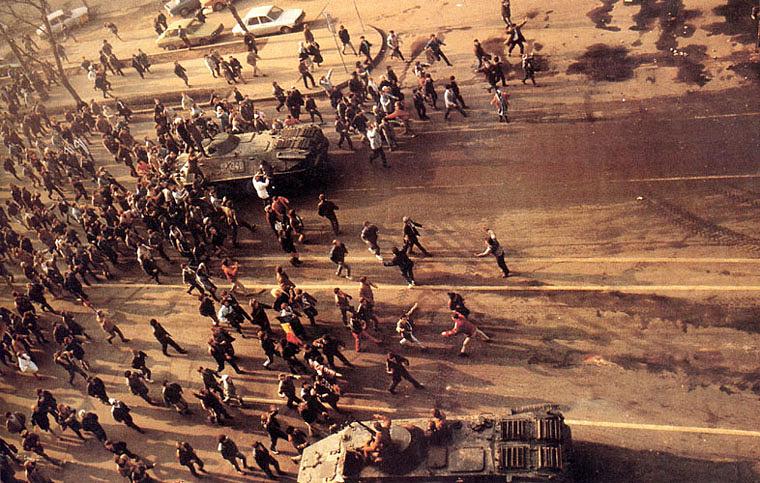1989 Revolution in Romania: Three attempts to kill communist dictator Ceausescu

Three attempts to kill Romania's communist dictator Nicolae Ceausescu failed during the December 1989 Revolution, before he was executed on December 25, according to prosecutors investigating the events.
The investigators also found that there was no power void in Romania during those days and that an military and political structure took control immediately after Ceausescu and his wife fled from Bucharest on December 22. A massive diversion and contradictory orders have led to numerous deaths in the days that followed Ceausescu's fall, the prosecutors concluded.
The ongoing investigation on the 1989 Revolution in Romania, which marked the fall of communism in the country, has brought new evidence to light. Prosecutors involved in this case have decided to hear or question once again several witnesses. They also collaborated with historians, writers and journalists who documented the December 1989 events, and used relevant data and information published in literature works focused on the Revolution in 1989, according to a press release from the Public Ministry.
The prosecutors also began looking into military and civilian archives, and scan and analyze the vast archive of the Romanian Senate, which was the basis for the Senate Committee Report on the Romanian Revolution of December 1989. They are also using video and audio materials.
The investigators have thus managed to “achieve a clear sequence of existing military and political events in the afternoon and evening of December 21, 1989,” and to “outline the sequence of events that were particularly important in the night of December 21/22, 1989.” They also managed to clarify the circumstances in which Nicolae Nicolae and his wife Elena managed to flee with a helicopter from the roof of the Communist Party’s Central Committee headquarters, the route they followed, and the behavior of the military forces when the revolutionaries took over the Central Committee building.
The Public Ministry also announced that the prosecutors established the structure of the politico-military command that took over the full power shortly after the communist dictator managed to flee. Thus, they concluded that there was no void of power in December 1989.
“At this stage of the investigation, it is possible to better establish the conduct of the members of the new political-military power, and the actions to legitimize it internally and internationally.”
The Public Ministry also said that it’s clear that “a diversion existed” starting the evening of December 22, 1989, on many levels, this being “the main cause of the numerous deaths, bodily injuries and damages.”
“The evidence revealed the mechanisms of the constant misinformation, with very serious consequences, launched by TVR (e.n. the public television), the radio, and the military means of communication, which led to the very well known terrorist psychosis. It also showed the way in which a series of diversionary military orders were transmitted, with particularly serious consequences.”
The Ministry also said that the “diversionist phenomenon” of those days was “unique in the history of Romania by its complexity and scope.”
The prosecutors also investigated the events at the Targoviste military base, the place where the Ceausescu couple was from the afternoon of December 22, 1989. There is evidence of a constant diversion targeting the military unit’s commanders, as well as the existence of orders from the top of the military hierarchy regarding the assassination of the Ceausescu couple. According to the prosecutors, there were three attempts to kill Nicolae and Elena Ceausescu before their execution on December 25, 1989.
The prosecutors are also investigating the causes that led to the killing of people across the country, and the circumstances that led to the fast trial and execution of the Ceausescu couple.
The former interim General Prosecutor Bogdan Licu requested the reopening of the 1989 Revolution case in April 2016, as he believed that the previous investigation had missed some things. The military prosecutors who previously investigated the Revolution closed the case in the autumn of 2015 without indicting anybody.
Irina Marica, irina.marica@romania-insider.com












